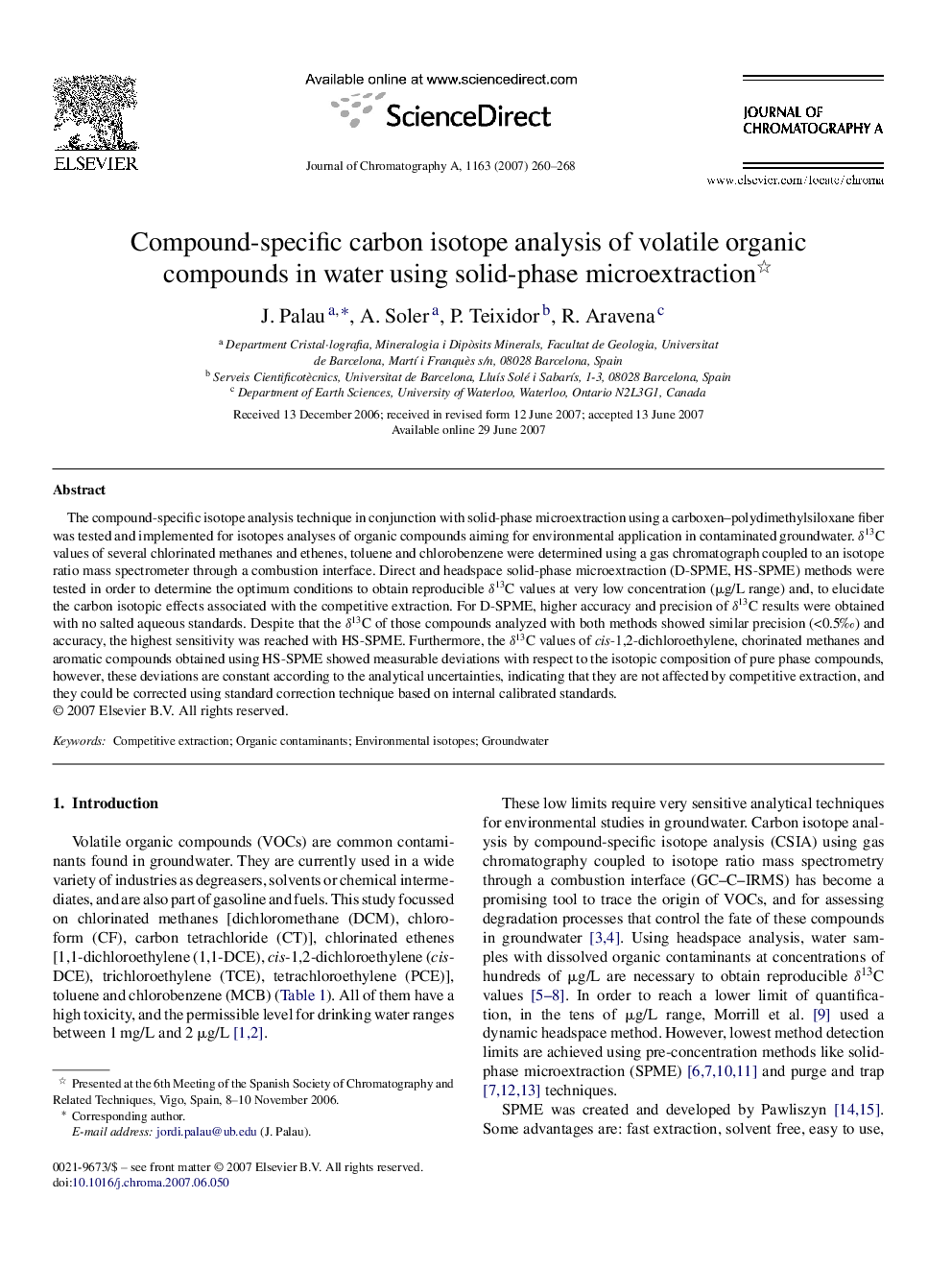| Article ID | Journal | Published Year | Pages | File Type |
|---|---|---|---|---|
| 1208165 | Journal of Chromatography A | 2007 | 9 Pages |
The compound-specific isotope analysis technique in conjunction with solid-phase microextraction using a carboxen–polydimethylsiloxane fiber was tested and implemented for isotopes analyses of organic compounds aiming for environmental application in contaminated groundwater. δ13C values of several chlorinated methanes and ethenes, toluene and chlorobenzene were determined using a gas chromatograph coupled to an isotope ratio mass spectrometer through a combustion interface. Direct and headspace solid-phase microextraction (D-SPME, HS-SPME) methods were tested in order to determine the optimum conditions to obtain reproducible δ13C values at very low concentration (μg/L range) and, to elucidate the carbon isotopic effects associated with the competitive extraction. For D-SPME, higher accuracy and precision of δ13C results were obtained with no salted aqueous standards. Despite that the δ13C of those compounds analyzed with both methods showed similar precision (<0.5‰) and accuracy, the highest sensitivity was reached with HS-SPME. Furthermore, the δ13C values of cis-1,2-dichloroethylene, chorinated methanes and aromatic compounds obtained using HS-SPME showed measurable deviations with respect to the isotopic composition of pure phase compounds, however, these deviations are constant according to the analytical uncertainties, indicating that they are not affected by competitive extraction, and they could be corrected using standard correction technique based on internal calibrated standards.
